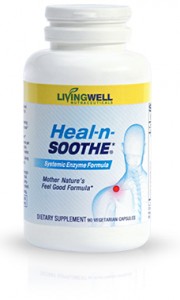Nearly everyone experiences it at some point in their life.
 Neck pain can result from accidents or injuries, muscle strain or imbalances, and even simple activities which are repeated over time, like sitting, reading, and working at the computer.
Neck pain can result from accidents or injuries, muscle strain or imbalances, and even simple activities which are repeated over time, like sitting, reading, and working at the computer.
Our bodies are in a sitting position often throughout the day. We eat, drive, read, watch TV and even work while sitting.
This simple act of sitting can cause the head to move forward, which in turn stretches the muscles across the upper back and shoulders.
A stretched muscle is a weak muscle, so when the muscles in our upper back are weakened, so, too, are the neck muscles.
The symptoms of this include a neck pain, a “kink” in the neck, pain which radiates into the shoulders or head, and sometimes weakness, numbness, or tingling in the neck, shoulders, or arms.
Neck and upper back pain that’s derived from muscle imbalances or trauma require more than attention just to the area of the neck or upper back that’s affected–to be truly effective, treatment must focus on the entire spine.
You may be able to identify that you have a pulled muscle or whiplash, which is a common injury due to sudden force, such as a car accident.
But knowing that doesn’t tell you why you’re having pain or which muscles might be imbalanced due to overuse or injury.
The only way to compensate for muscle weakness or imbalance is to determine which muscles need strengthened.
Then you can begin to address the imbalance, as well as the cause of your neck pain, such as activities or posture.
It’s not enough to relieve the pain–your goal is to prevent it from recurring, too.
Anti-inflammatory medications can also relieve the pain and are often prescribed by physicians and therapists for that purpose.
Don’t rely on minimizing the pain through pain relievers to fix the problem.
I prefer natural anti-inflammatories, like proteolytic enzyme supplements, rather than medications, regardless if they are prescription or over-the-counter.
Unless you’re suffering from a specific injury, most neck and upper back pains can be attributed to poor posture or muscle imbalances; therefore, antiinflammatory medications are a temporary fix.
If you don’t correct the cause of the problem, it’s almost certain that it will return.
There are corrective exercises for any muscle imbalance, as well as ways to strengthen any set of muscles that has weakened over time.
It’s very important, though, to identify the muscles that are weak, as well as though which are strong. You don’t want to further strengthen a muscle if it’s too strong.
That could result in making a weak muscle even weaker, countering the result you want to achieve.
Therefore, it’s imperative that you identify your particular muscle imbalances so you can target your corrective regimen directly on the muscle groups which need it.
Once you’ve identified the muscles causing your neck pain, begin to identify activities which contribute to your problem.
These might include such regular activities as leaning forward to read or eat, raising one shoulder to support a phone between your ear and shoulder, or even sleeping in one position all of the time.
Eliminate stress, which frequently introduces itself as neck pain because stress causes neck muscles to tighten and clench.
Correct your posture. Drink plenty of water to help those muscles relax and release built-up toxins.
Trigger point therapy can also help loosen knotted muscles, bringing relief to the underlying area.
Neck and upper back pain stemming from trauma or injury might require more than Muscle Balance Therapy or trigger point therapy.
While it’s always a good idea to use Muscle Balance Therapy in any back or neck pain therapy, certain injuries or imbalances may benefit from cervical spinal decompression or inversion therapy
Temporary Pain Relief — Action Plan
Read about all the elements of a successful temporary pain relief action plan
These are the three you should begin today, in order of importance
-
Far infrared heat therapy
-
Pain-relief cream
-
Natural anti-inflammatory (e.g., proteolytic enzyme supplements)


